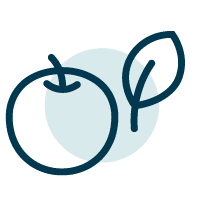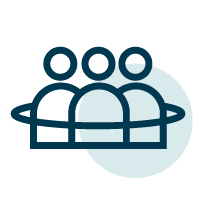Barriers to Access
A Healthier World Starts with Equitable Access
When individuals or communities are underserved by existing systems, the negative impacts extend to all – families, nations, and future generations. Local and national partners and governments play a critical role in helping to identify and understand the context-specific challenges that impede access. Developing and testing solutions in real-world settings creates the opportunity to learn, adapt, and continuously improve. With accurate insights, we can build tools and training that can be tailored to the specific needs of each community or individual and, ultimately, extend health and nutrition services further than ever before.
Barriers to Nutritional Access in Underserved Communities
It is important to understand that each of these challenges rarely exists on its own. Most often, pregnant women, infants, and young children in underserved communities experience multiple barriers to good nutrition. Similarly, these issues are not limited to low- and middle-income countries. They impact individuals around the world, including in the U.S.
Availability of Nutrition Solutions & Care
A limited supply of resources, such as product or health professionals, may exist within a specific region or timeframe.
Examples could look like:
A health clinic that is out of stock of essential medicines due to supply chain shortages.
A community may be located in a maternity care desert where there are no hospitals or obstetric care providers.
A pregnant woman is unable to schedule a doctor’s appointment at a time that suits her work schedule.
Accessibility Obstacles
Healthcare services or products for families in low-resource settings may be too far away, inadequately distributed, or require long waiting lists or waiting times.
Examples could look like:

A community located in the mountains cannot be reached by road for part of the year due to wash outs.

A parent brings their child to a clinic to receive care, but due to staffing shortages, they wait all day and leave without being seen.

A government directs all of its resources to a region affected by natural disaster leaving no inventory for other areas.
Affordability of Healthcare and Related Costs
Families in low-resource areas may find healthcare to be cost-prohibitive, including appointment fees, transportation costs, and loss of wages while seeking care. Adding to the affordability equation, the expense of a nutritious diet may contribute to food insecurity or food shortages among the most nutritionally vulnerable.
Acceptability by Participants
Due to a complex range of factors such as long-standing social norms and real or perceived quality of care concerns, some communities have low trust in healthcare services and commodities.
Examples could look like:

The product available to an individual or community does not accommodate religious or dietary considerations (e.g. Halal)

Due to historical marginalization or discrimination, individuals from a racial or ethnic group may experience or anticipate receiving inadequate or inequitable care.
Limited Awareness
Interventions and services may be available, but families do not know they exist or why they are needed.
Everyone deserves access to knowledge and support to make healthy decisions for themselves and their families. Yet, when it comes to health and nutrition education, access to basic information cannot be taken for granted. During pregnancy and early childhood questions abound, but resources to respond are not always available.
